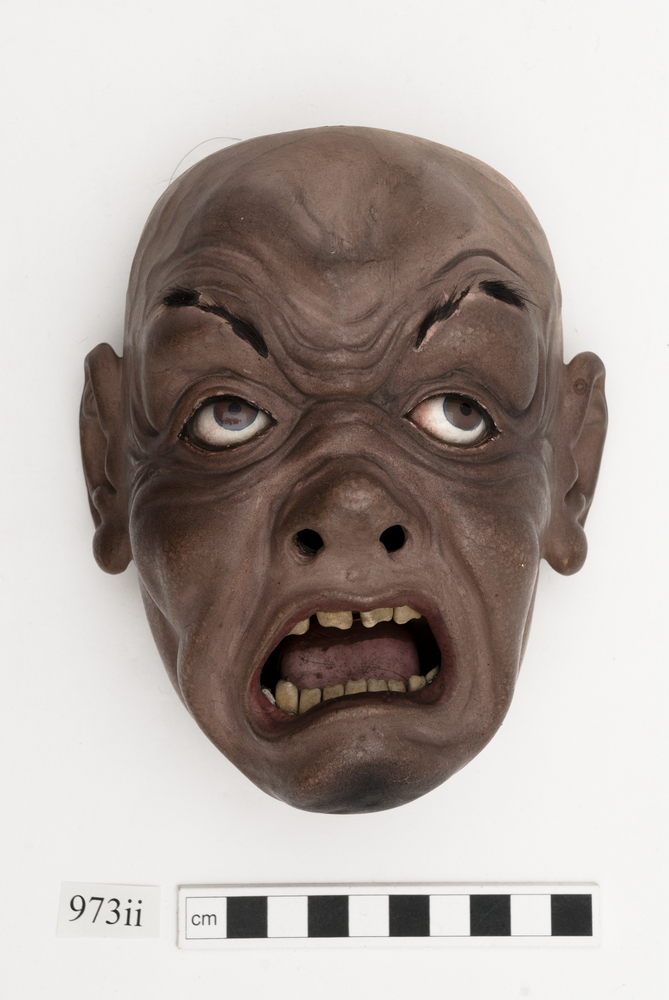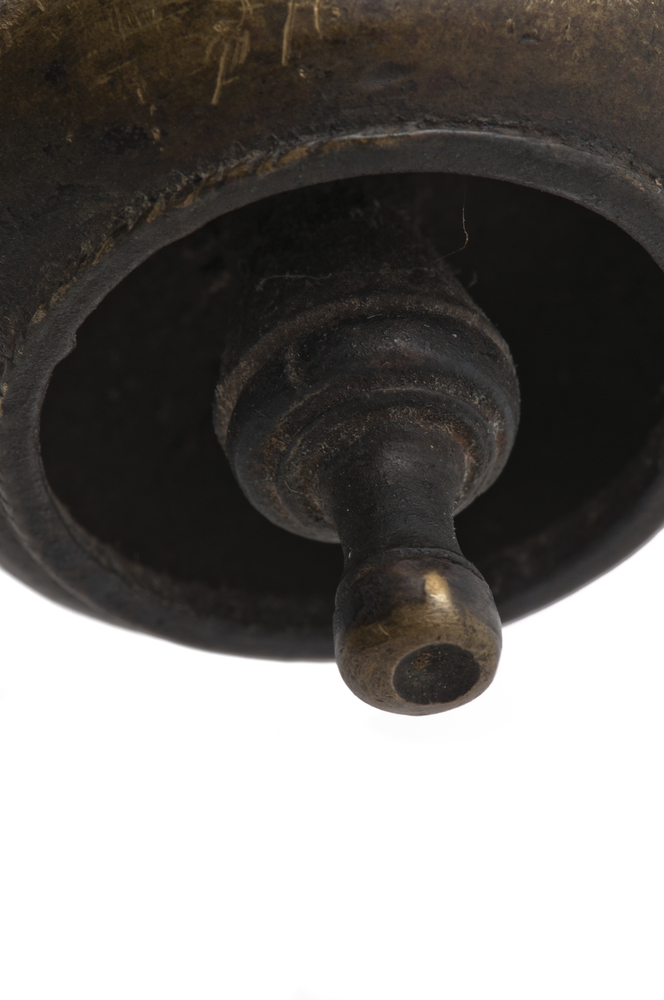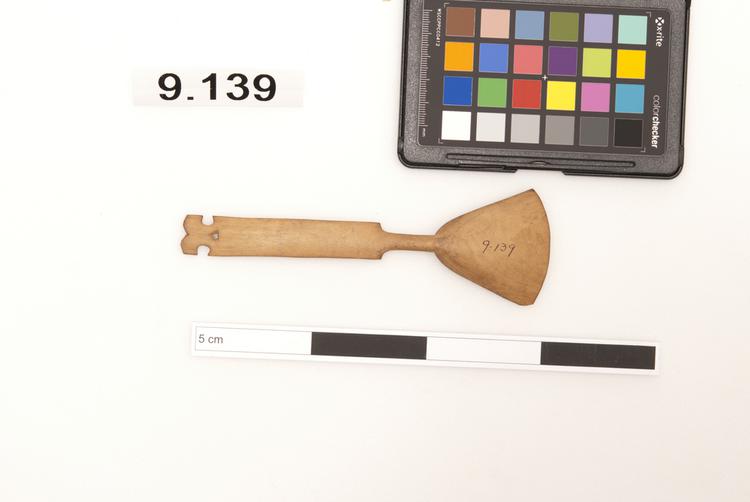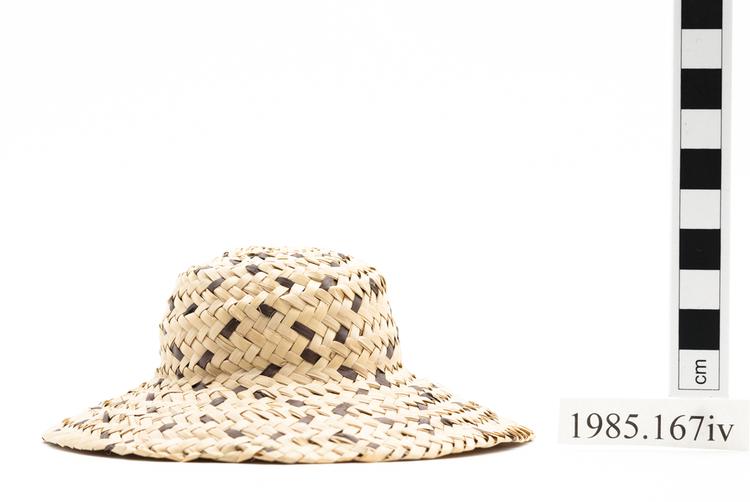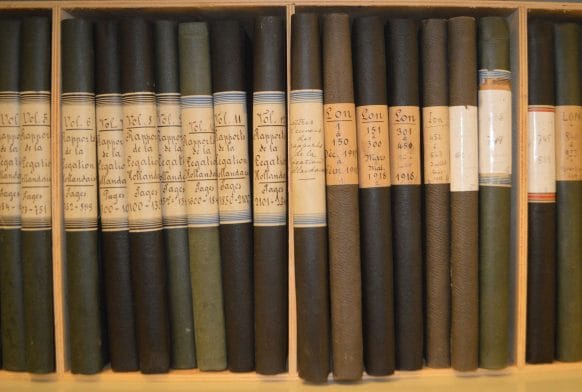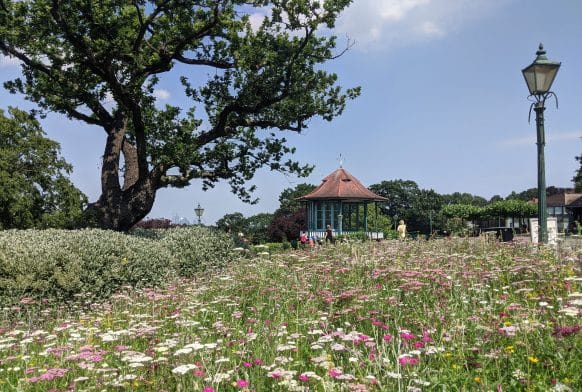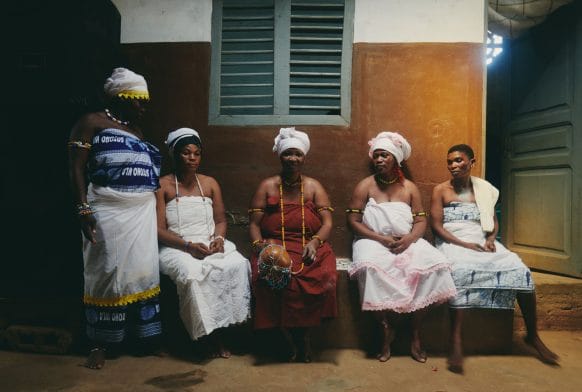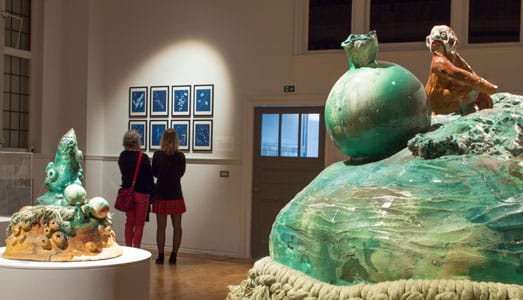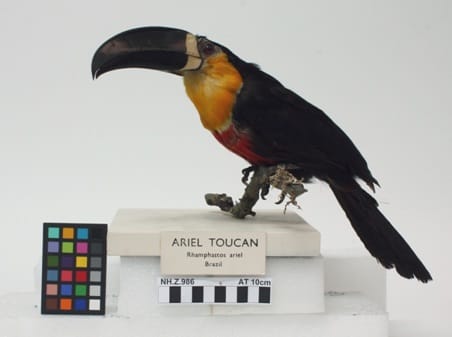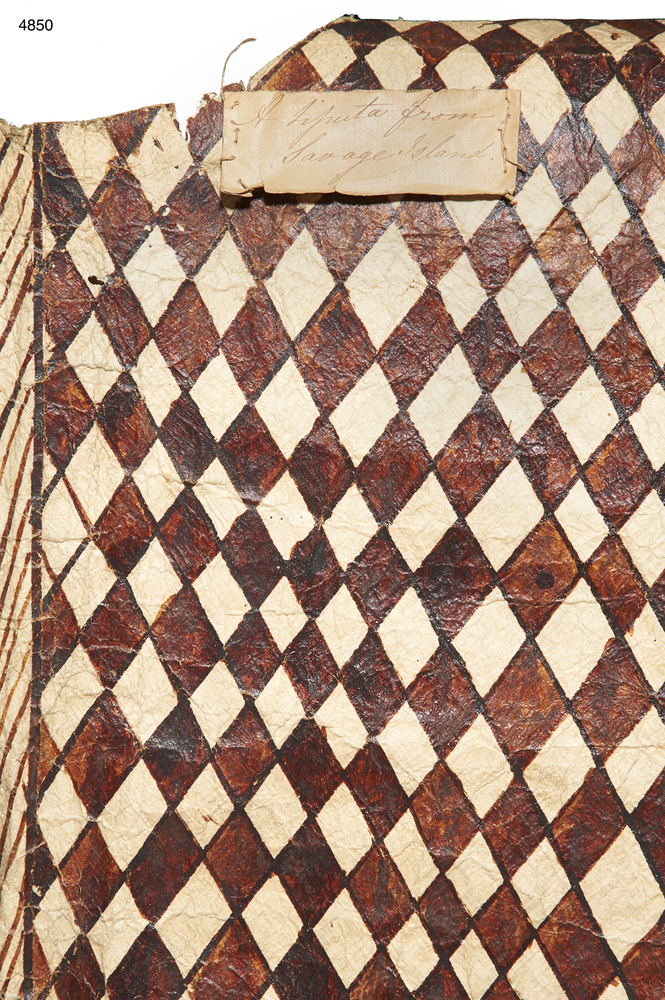
Tiputa dress of paper mulberry barkcloth with many pinked tabs down both sides. The front and back of the dress are over-painted with ruled lines and hand-painted infilling, constructing a diamond chequered board, chevrons, and zig zags.
Barkcloth Poncho, Tiputa, probably Mangaia, Southern Cook Islands, Central Polynesia As elsewhere in Polynesia, the finest Cook Islands barkcloth was made from strips of inner Paper Mulberry bark (anga, Broussonetia papyfera). The finished tapa cloth was produced by women beating these strips together using hardwood mallets (ike) on low, wide anvils (tutunga). The finished cloth was decorated with various dyes and pigments, but the reddish-brown colour used here to lay out the painted grid was extracted from the shredded bark of the tuitui tree (Candlenut, Aleurites moluccana). Different styles of tab-fringed tiputa ponchos like this example were used for different purposes. Some were dyed black, or dyed dark brown and ornamented with multiple cut-out shapes, and worn as formal mourning clothes. Others in the style of the present tiputa, fringed and covered throughout with a lattice-work grid of diamond zones and lines, were viewed as fundamentally chiefly in nature. These garments could be worn by men or women equally, but in different ways. Chiefly women wore decorated tiputa as their everyday clothing, and prized the garment for the pale, un-tanned skin it allowed them to cultivate as a sign of their leisurely indoors lifestyles. For chiefly men, the tiputa was more restricted: only the first-born son in any generation was entitled to wear this kind of tiputa, and only on occasions of high ceremony, such as his wedding, or his formal appointment to a chiefly title. Barkcloth, pigment. Late 19th Century. Provenance unknown.



